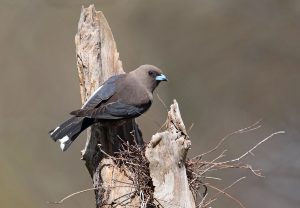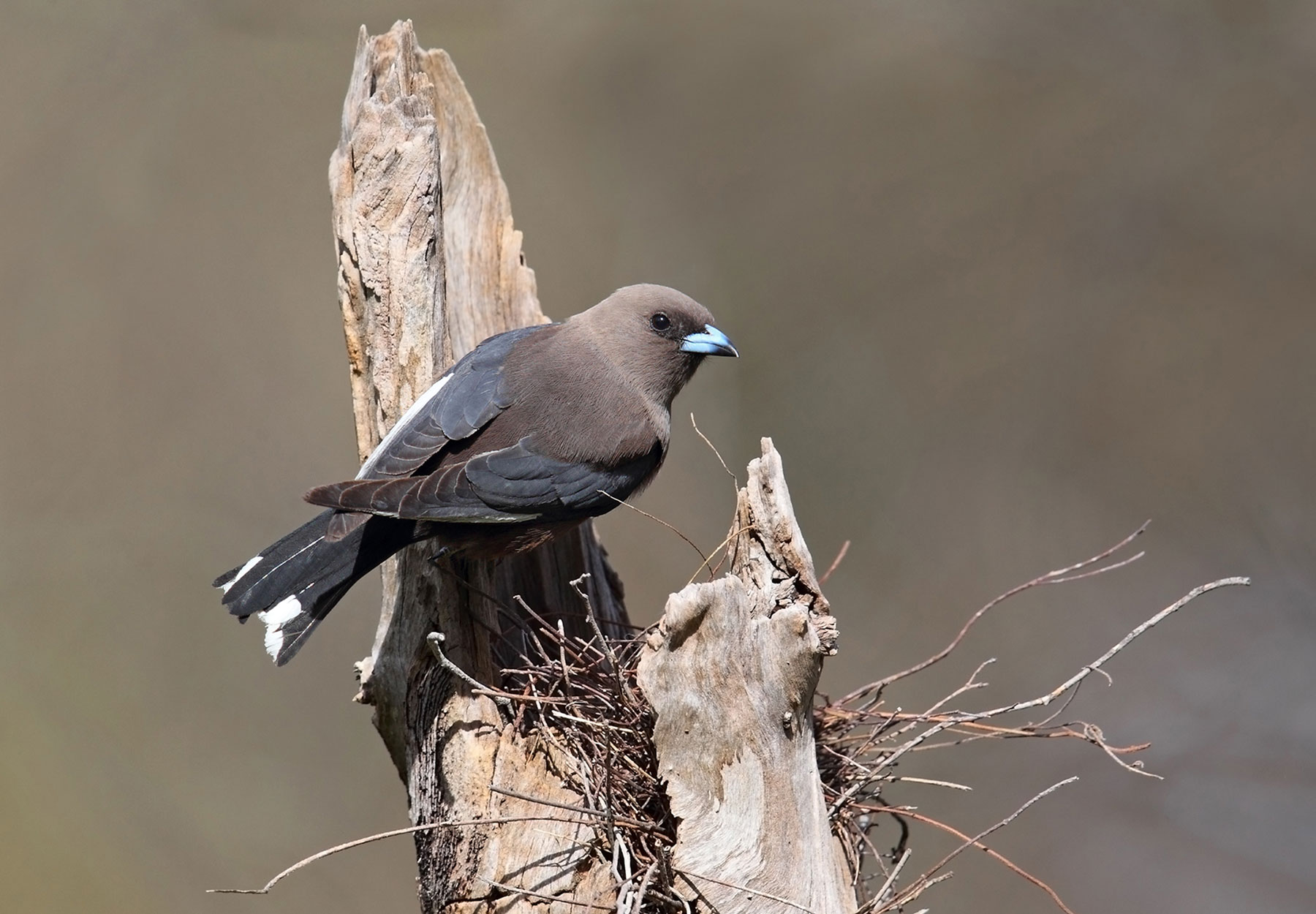By Ian Davidson and Chris Tzaros – Wangaratta Landcare & Sustainability
Occurring right throughout south-eastern and south-western Australia, the Dusky Woodswallow is a common and familiar bird found in many different wooded habitat types. It does, however, favour open eucalypt woodlands and forest edges where there are widely spaced large trees with dead branches, and patches of fallen timber that provide perches and vantage points whilst foraging.
Woodswallows, as a group, are very neat and immaculate in appearance which is related to their use of powder downs for preening. Powder downs are specialised downy feathers that produce a fine powder that the birds distribute through their plumage with their beaks whilst preening, giving the birds a soft sheen and providing protection against wetting and wearing. These feathers are rather uncommon in small bush birds and usually occur in waterbirds such as ducks and herons, and also in parrots and cockatoos.
Dusky Woodswallows, like other species of woodswallows, are strongly aerial and social by nature. They typically occur in small loose flocks of up to a dozen or so birds, capturing insects on flapping, wheeling and gliding flights, sometimes at great height but usually just above the canopy and in between trees. When perched in between foraging bouts, they characteristically fan and twist their tails, especially just after alighting or when agitated. They call continuously to maintain contact with other members of their communal group, giving chirruping calls when foraging and scolding notes when alarmed. They are always very vigilant and at the first sign of a predator such as a raptor, currawong or kookaburra, they signal to each other with an alarm call which also alerts other birds in the area to potential danger.
In southern parts of their range, such as here in north-eastern Victoria, they are considered partial migrants, with local resident populations (that remain over winter) being joined by migrating birds from Queensland and northern New South Wales in early spring. These birds breed through spring-summer before departing in early-mid autumn.
All woodswallows roost communally at night, lining-up in tight rows side-by-side on a branch and huddling together, especially in cool conditions. They also roost and loaf in clusters clinging to scars on tree trunks, and sometimes entering hollows. Their open cup-shaped nests are usually positioned in the top of an open stump, or occasionally behind large pieces of peeling bark.

Photo by Chris Tzaros (Birds Bush and Beyond).

